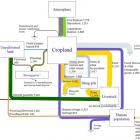Did pre-industrial agriculture result in the mining of soil nutrients? The answer to this question could inform the planning of sustainable agricultural systems, but it needs an interdisciplinary approach, bridging history and ecology. Place matters for such a question, as the natural and social conditions differed markedly. Mediterranean agro-ecosystems are, as yet, understudied. The study of Sentmenat, a small Catalan village, helps to remedy this situation.
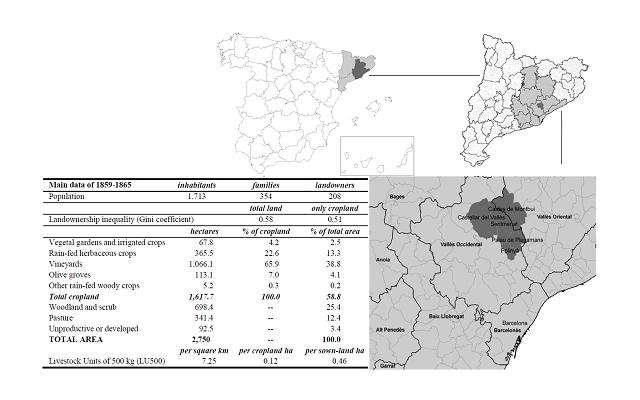
Fig. 1: Location of the municipality of Sentmenat in the province of Barcelona, Catalonia and Spain, and main historical data (1859–1865)
Fig. 1: Location of the municipality of Sentmenat in the province of Barcelona, Catalonia and Spain, and main historical data (1859–1865)
© Enric Tello, Ramon Garrabou, Xavier Cussó, José Ramón Olarieta, Elena Galán.
Used by permission.
The copyright holder reserves, or holds for their own use, all the rights provided by copyright law, such as distribution, performance, and creation of derivative works.
Between 1861 and 1865, Sentmenat had a population density of 59 inhabitants per square km, similar to northern European rural areas at that time, but a lower livestock density of only 12 livestock units (500 kg) per square km of cropland. The village therefore suffered from manure shortage. The nutrient gap was filled by transferring nutrients from uncultivated areas or vineyards to the cropland through methods such as the so-called hormigueros, in which piles of dried vegetation were burned in small charcoal-kilns under a soil cover to generate both anoxic combustion and fertilizer, or the direct burial of fresh vegetable matter in ditches dug between rows of vines. While these options could alleviate the problem, they came at a cost: a lot of human and animal labor was needed.
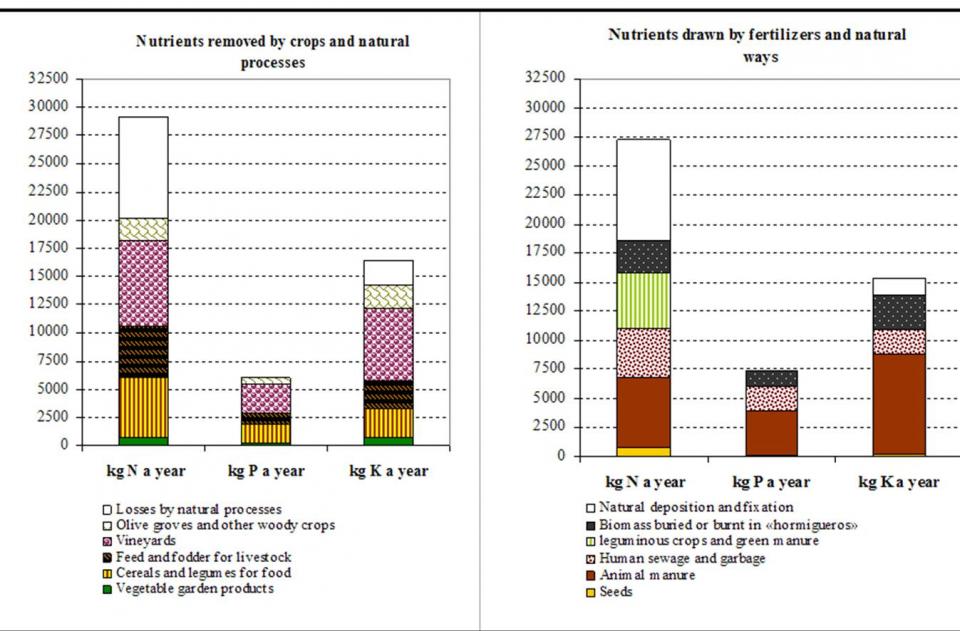
Fig. 2: Summary of the nutrient balance in Sentmenat, circa 1861–1865
Fig. 2: Summary of the nutrient balance in Sentmenat, circa 1861–1865
© Enric Tello, Ramon Garrabou, Xavier Cussó, José Ramón Olarieta, Elena Galán.
Used by permission.
The copyright holder reserves, or holds for their own use, all the rights provided by copyright law, such as distribution, performance, and creation of derivative works.
It seems this type of intensive organic agriculture could sustain cropland fertility. To calculate the balance, we assumed that the soil’s nutrient losses were lower than 50% in nitrogen, 10% in phosphorous and 20% in potassium (the three main macronutrients required for plant growth). As shown in figure 2, nutrient input was large enough to replace these main macro-nutrients taken from the soil. Nevertheless, contemporary agronomists were correct in bemoaning the inadequacy of local livestock densities.
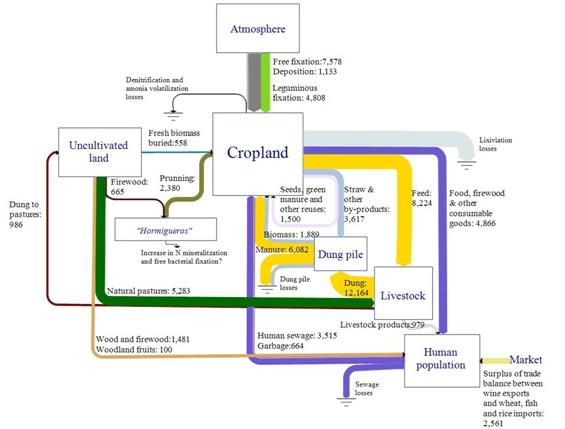
Fig. 3: Annual flows of N in the municipality of Sentmenat, circa 1861–1865 (kg)
Fig. 3: Annual flows of N in the municipality of Sentmenat, circa 1861–1865 (kg)
© Enric Tello, Ramon Garrabou, Xavier Cussó, José Ramón Olarieta, Elena Galán.
Used by permission.
The copyright holder reserves, or holds for their own use, all the rights provided by copyright law, such as distribution, performance, and creation of derivative works.
Paucity of manure coupled with labor shortage meant that actual fertilization did not always balance crop extractions in each farm or plot. In spite of the fact that the maximum potential of fertilizers available was probably enough to maintain soil fertility, social inequality affected the availability of livestock manure, woodland or scrubland cuts, and latrines. For example, we believe that poorer wine-growing tenants, especially, may have worked with a nutrient deficit.
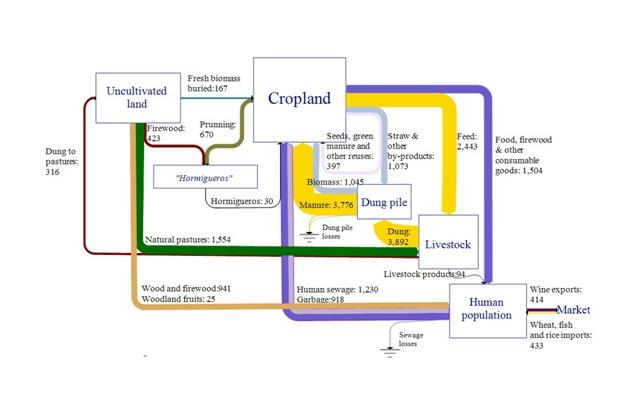
Fig. 4: Annual flows of P in the municipality of Sentmenat circa, 1861–1865 (kg)
Fig. 4: Annual flows of P in the municipality of Sentmenat circa, 1861–1865 (kg)
© Enrico Tello, Ramon Garrabou, Xavier Cussó, José Ramón Olarieta, Elena Galán.
Used by permission.
The copyright holder reserves, or holds for their own use, all the rights provided by copyright law, such as distribution, performance, and creation of derivative works.
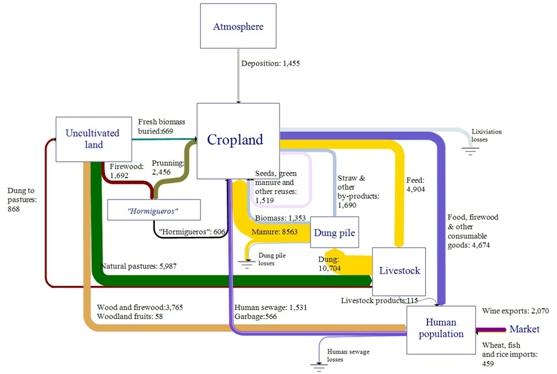
Fig. 5: Annual flows of K in the municipality of Sentmenat circa 1861–1865 (kg)
Fig. 5: Annual flows of K in the municipality of Sentmenat circa 1861–1865 (kg)
© Enric Tello, Ramon Garrabou, Xavier Cussó, José Ramón Olarieta, Elena Galán.
Used by permission.
The copyright holder reserves, or holds for their own use, all the rights provided by copyright law, such as distribution, performance, and creation of derivative works.
This work was carried out as part of the project Environmental History of Mediterranean Agrarian Landscapes funded by the Spanish Ministry of Science and Innovation (HAR2009-13748-C03-01HIST), and is linked to the Partnership Grant on Sustainable farm systems: long-term socio-ecological metabolism in western agriculture submitted to the Social Sciences and Humanities Research Council of Canada. The data was processed by Elena Galán using the Manager of Energy and Nutrient Balances of Agricultural Systems (MENBAS), an accounting tool now being developed at the University of Barcelona that will be soon offered as an Open Access resource on our website (see link below).
How to cite
Galán, Elena and Tello, Enric. “The Natural and Social Conditions for Soil Nutrients: The Case of a Mediterranean Village in the 1860s.” Environment & Society Portal, Arcadia (2012), no. 4. Rachel Carson Center for Environment and Society. https://doi.org/10.5282/rcc/3694.
ISSN 2199-3408
Environment & Society Portal, Arcadia
 This work is licensed under a Creative Commons Attribution-NonCommercial-ShareAlike 3.0 Unported License.
This work is licensed under a Creative Commons Attribution-NonCommercial-ShareAlike 3.0 Unported License.
2012 Enric Tello and Elena Galán
This refers only to the text and does not include any image rights.
Please click on the images to view their individual rights status.
- Garrabou Segura, Ramón, and Manuel González de Molina. La reposición de la fertilidad en los sistemas agrarios tradicionales. No. 631.422 R425r. Madrid: Icaria Edit, 2010.
- González de Molina, Manuel. “A Guide to Studying the Socio-Ecological Transition in European Agriculture.” DT–SEHA Working Paper 1006, Spanish Society for Agricultural History, 2010. View PDF.
- Tello, Enric, Ramon Garrabou, Xavier Cussó, José Ramón Olarieta, and Elena Galán. “Fertilizing Methods and Nutrient Balance at the End of Traditional Organic Agriculture in the Mediterranean Bioregion: Catalonia (Spain) in the 1860s.” Human ecology 40, no. 3 (2012): 369–383.




